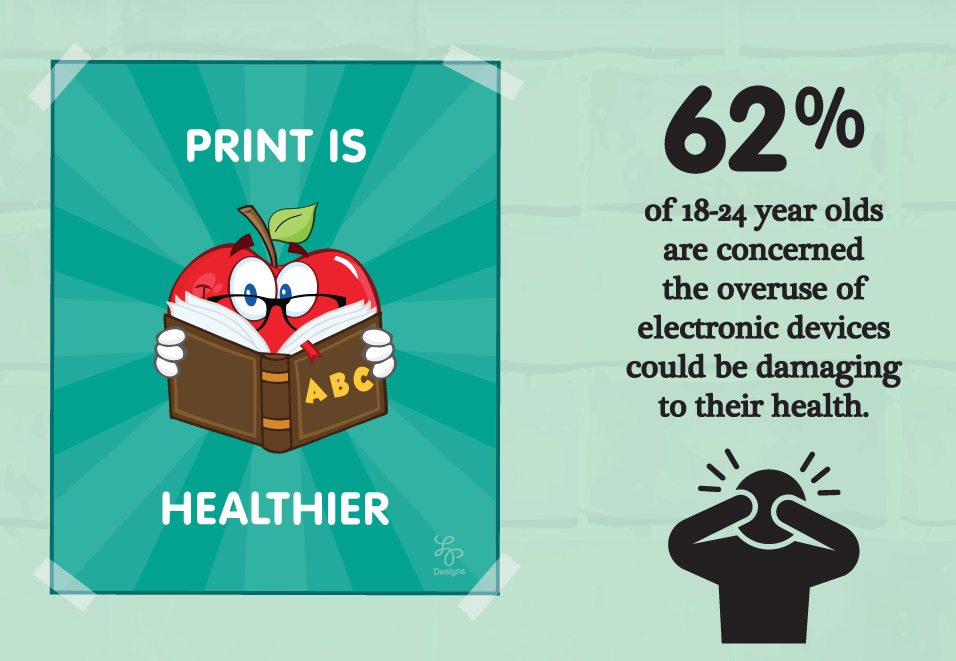| |
 · www.tappi.org
· www.tappi.org
· Subscribe
to Ahead of the Curve
· Newsletters
· Ahead
of the Curve archived issues
· Contact
the Editor

|
|
|
|
And the survey says….
The benefits of print, paper, and packaging (especially when made from renewable forest products) seems obvious to AOTC readers and other industry professionals, but what about to consumers?
We decided to look at the results some recent surveys and share a few of the results below. The numbers indicate that you don't need to be involved in the forest products industry to recognize the importance of print, paper, and packaging, or the impact that all of these have on daily life.
Packaging Matters
Packaging producer WestRock has released its 2018 "Packaging Matters" survey of consumer preferences. Through an independent research firm, Reputation Leaders, WestRock surveyed almost 2,000 US adults about their perceptions and views of packaging and packaging-related matters. (The survey results are available for complimentary download at www.westrock.com.)
According to the company, there have been plenty of changes in consumer buying habits, options, and behavior since WestRock first began commissioning the survey in 2013. "Have you cooked dinner using a meal delivery kit? Or sampled products from a subscription box service? Have you redeemed an email promotion to save on an in-store purchase? This new reality of what and how we buy things has major implications for retailers and brands," states the report.
And while the effects of online shopping have been much-reported on within our industry for several years now, WestRock's survey reveals that modern consumer preferences and experiences are more becoming increasingly complex. "(Consumers) are driving retailers and brands to connect and engage with them in new ways," says the report. "In this changing retail environment, packaging is the one enduring element of the marketing mix that is guaranteed to reach every consumer."
Given that multi-faceted perspective, here are a few of the "take-aways" from the WestRock Packaging Matters Survey for 2018:
• Product Safety: 75 percent of consumers say their purchase decision is impacted by packaging made from materials that prevent the product from leaking or breaking.
• Millennial Preferences: 53 percent of Millennials value a new or unique shape or appearance of the package versus 18 percent of non-Millennials.
• Trust and Renewability: As a driver in "building trust" in a brand, 62 percent of respondents value manufacturing products in an ethical and responsible way; and 62 percent value packaging designed to be recyclable, reusable or biodegradable.
• Purchasing Behavior: 81 percent of consumers have tried something new because the packaging caught their eye.
"For consumers, the most important satisfaction factors tie to packaging's core purpose of protecting the product's integrity and allowing the consumer to use that product easily, features that have consistently rated as the most important since we began our research six years ago," the report states. "Today, more than ever, packaging matters."

Picturing the story
A new infographic from Two Sides North America (twosidesna.org ) backs up the importance of packaging with an infographic that emphasizes the sustainable story of renewable packaging materials. The infographics use clear illustrations to present the results of the most impactful results from US consumer surveys conducted between 2015 and 2018 by Toluna, a global polling firm, and Two Sides North America.
Released in September 2018, this third in the series of infographics from Two Sides asks, "Why do so many people love print on paper?" According to the website, the colorful, easy-to-understand graphic is designed to help dispel common myths about the switch from paper to digital. Here are a few of the key facts it highlights:
• 88 percent of those surveyed believe they understand, retain or use information better when they read print.
• 80 percent have a clear preference for reading complicated materials in print in contrast to 13 percent for computer screens and 3% for smartphones.
• 68 percent believe that books are more likely to encourage learning and the development of other skills than using screens.
The infographic series focuses on the fact that the majority of Americans agree that print on paper is preferred for learning and retention, especially when it comes to complicated materials, according to the Two Sides website. The newest infographic particularly spotlights the fact that print and paper is not affected by the health and wellness concerns sometimes associated with overuse of electronic media.
"We were also surprised by the strong response of the 18- to 24-year-old group—69 percent of which said it was important to 'switch off' and enjoy printed books and magazines, and 62 percent being concerned about the health effects of increased screen time," says Phil Riebel, president, Two Sides North America.
The two other infographics in the "Why Do So Many People Love Print on Paper?" series tout survey results that show users find print and paper more enjoyable (for instance, 79 percent agree that print on paper is more pleasant to handle and touch when compared to other media) and more sustainable (91 percent of respondents believe that, when responsibly produced, used, and recycled, print and paper can be a sustainable way to communicate.)
Other infographics available on the website feature facts on sustainable production, statistics about the problem of "greenwashing", and the economics of print on paper. All are available for free download at twosidesna.org.
For a modest investment of $174, receive more than US$ 1000 in benefits in return.
Visit www.tappi.org/join for more details. |
|




